Education
Top 5 Highlights of Cambridge Court High School Annual Function 2024
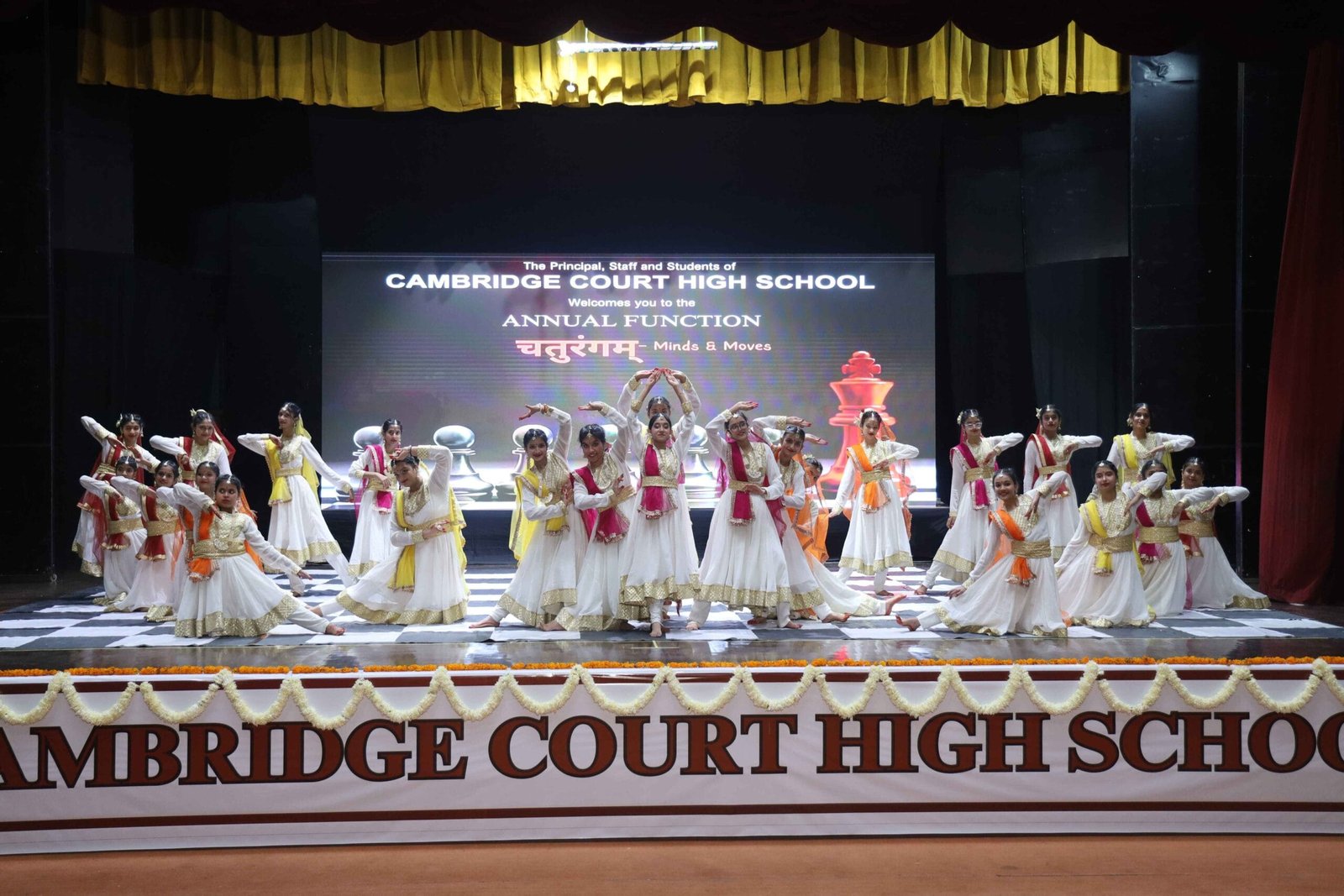
- ‘Akhanadamandalakaram’ – Featuring students from Grades II to IV.
- ‘Chaturanagam – Minds and Moves’ – Performed by students of Grades V to IX & XI.
- Vibrant Dance Performances: Energetic and colorful moves enthralled the audience, reflecting months of rigorous practice.
- Chess-Themed Drama: Senior students performed a unique dance-drama depicting chess pieces such as the king, queen, bishop, rook, and pawns, delivering a powerful message about the significance of every role in life, no matter how small.
- Divine Atmosphere: The young Cambridgians created an aura of gaiety and devotion, resonating with the audience on a spiritual level.
- Academic Excellence Awards: Meritorious students were honored for their outstanding performance in academics.
- Appreciation for Participants: Mrs. Rawat applauded the efforts of students and staff for their hard work in making the event a grand success.
Contents
Jaipur, 30 Nov. 2024: Cambridge Court High School celebrated its Annual Function 2024 with grandeur and vibrant enthusiasm on November 29th at the prestigious Birla Auditorium. This event marked a culmination of creativity, talent, and dedication, reflecting the school’s commitment to holistic education.
The celebration, divided into two segments, highlighted the artistic and intellectual abilities of students, leaving the audience spellbound.
Theme and Divisions of the Cambridge Court High School Annual Function 2024
The Annual Function 2024 was themed to showcase imagination and talent through two captivating segments:

Both segments were carefully designed to blend cultural heritage with modern artistry, portraying a beautiful amalgamation of tradition and innovation.
Cultural Extravaganza: Dance, Drama, and Music
The cultural performances were the highlight of the evening. Students showcased their talents in dance, music, and drama, presenting captivating displays of artistic excellence.



The seamless coordination and creativity of these performances demonstrated the dedication of both students and faculty.
Honoring Excellence and Achievements
During the event, the school’s Mentor, Mrs. Lata Rawat, presented the Annual Report, highlighting the institution’s achievements over the past year.
She also emphasized the importance of revisiting cultural roots to inspire the younger generation.


A Memorable Evening
The Annual Function 2024 of Cambridge Court High School concluded with the National Anthem, leaving an indelible mark on the hearts and minds of the audience. The vibrant performances, strong thematic representation, and celebration of academic and cultural excellence made it a truly memorable event.
For more updates on Cambridge Court High School, visit their official website: Cambridge Court High School.
Education
Empowering Educators: A Three-Day Learning Journey at DAV Centenary Public School, Jaipur
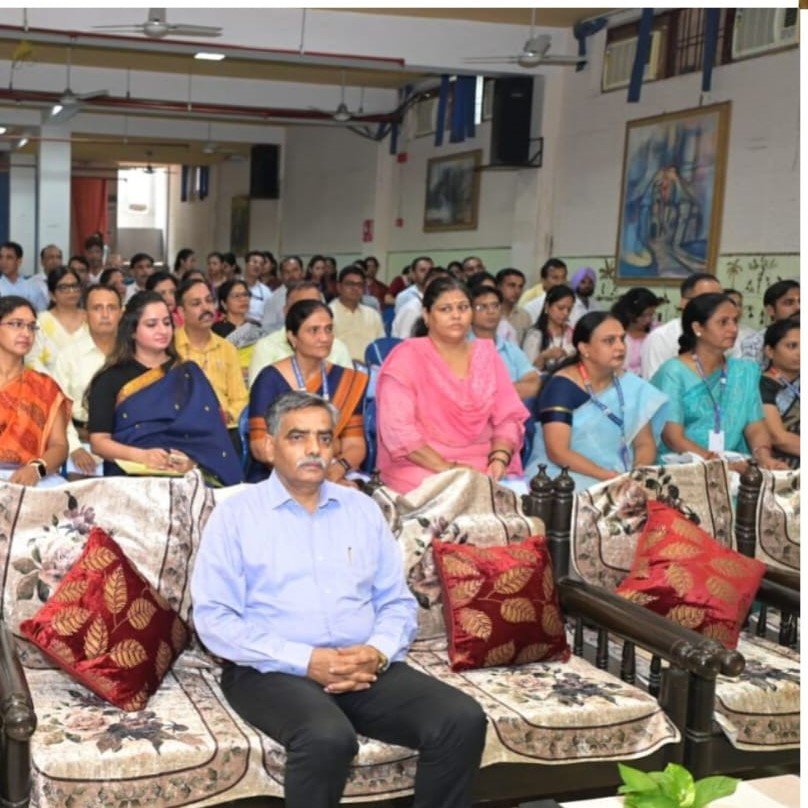
Contents
Jaipur, June 28, 2025 – Classrooms may have been quiet, but learning was louder than ever at DAV Centenary Public School, Jaipur, where teachers became students once again.
From June 26 to 28, 2025, the school hosted a powerful Offline Three-Day Capacity Building Programme (CBP) Cycle-I under the aegis of DAV Centre for Academic Excellence (DAVCAE), New Delhi. Organized jointly by Rajasthan Zone-A and Zone-C, the programme brought together 122 passionate educators from 12 DAV schools, determined to grow, connect, and reimagine their classrooms.
Training with a Purpose, Teaching with a Heart
Set across 11 different venues, the CBP wasn’t just a workshop—it was a movement. From Primary to Senior Secondary, from English to Science, and even Sanskrit to EEDP, each subject found its voice through hands-on sessions, thoughtful discussions, and expert insights shared by 31 DAVCAE-trained Master Trainers.
What made this training unique was its soul. It wasn’t about adding more chalk to the board; it was about lighting a new spark in each teacher. Topics like experiential learning, inclusive education, ICT integration, and pedagogical innovation became more than concepts—they became goals.
A Celebration of Wisdom, Music, and Togetherness
The programme began on a graceful note with the lighting of the ceremonial lamp, followed by a heartfelt welcome by Mr. A.K. Sharma, Principal of the host school and ARO of RTC Jaipur Cluster.
But this wasn’t just about academic rigor. Each evening bloomed into a musical celebration, where teachers, educationists, and even alumni came together—not just to perform, but to connect, express, and celebrate their shared purpose. These cultural evenings reminded everyone that behind every textbook is a human story.
Voices that Inspired: Messages from Leaders
Words of encouragement from Mr. Navneet Thakur (Cluster Head, RTC Rajasthan Zone-A) and Mr. Harbans Thakur (Principal, DAV HZL Sr. Sec. School, Zawar Mines) echoed throughout the event. Both leaders urged teachers to walk into classrooms not just with lesson plans, but with empathy, innovation, and collaboration.
Participants didn’t just attend—they engaged. They shared experiences, exchanged ideas, and walked away with new strategies, deeper clarity, and a renewed passion for teaching.

Gratitude, Certificates, and a Peaceful Goodbye
The programme concluded with a sincere vote of thanks by Mr. A.K. Sharma, who acknowledged every principal, teacher, and coordinator who made this event a success. Certificates of participation were awarded, not just as tokens but as symbols of commitment and growth.
As the event ended with the soulful chanting of the Shanti Mantra, there was a shared understanding: when teachers learn together, students shine brighter.
Education
St. Xavier’s School Nevta Outshines in AISSC Class 12 Results 2024-25

Contents
Principal Rev. Fr. Sangeeth Raj’s Exclusive Interview Airs on CREDENT TV
Jaipur, Rajasthan – Living up to its stellar reputation, St. Xavier’s School Nevta has once again demonstrated academic brilliance in the AISSC Class 12 Results for the session 2024-25. The school community is beaming with pride as students achieve exceptional marks across all streams, a testament to their hard work, guided mentorship, and a deeply-rooted value-based education system.
Toppers Who Made the School Proud
The spotlight shines on the stream toppers:
- Navya Sodhani (Humanities) – 97.40%
- Krish Dharewal (Commerce) – 96.40%
- Mahak Kumawat (Science) – 93.20%
These students have not only excelled academically but have become role models for the school community.
Subject Toppers Raise the Bar with 100 Marks
This year’s results also include a remarkable number of subject toppers, with over 20 students securing full marks (100) in subjects like:
- Geography
- Psychology
- History
- Political Science
- Accountancy, and more.
Outstanding scorers include:
- English (98 marks): Navya Sodhani, Avani Bansal, Yashwardhan Pareek, Nishka Sharma
- Accountancy, Psychology, Geography (100 marks): Aditya Kabra, Anushka Daditch, Kriti Yadav, Kanishka Shekhawat, Samriddhi Gupta
Their achievements reflect the school’s commitment to holistic development, academic mastery, and excellence in pedagogy.
Leadership and Vision: A Principal’s Perspective
In an inspiring interview featured on CREDENT TV, Principal Rev. Fr. Sangeeth Raj shared reflections on the school’s educational ethos and what sets St. Xavier’s apart:
“This result is not just a number but a reflection of perseverance, values, and vision. Our goal has always been to nurture responsible global citizens who strive for excellence with compassion.”
He credited the success to a collaborative ecosystem of teachers as mentors, students as learners and leaders, and parents as partners in education—guided by the principles of Jesuit philosophy.
A Collective Celebration of Excellence
The school management, teachers, students, and parents are celebrating this glorious academic milestone with heartfelt joy and gratitude. The results have not only elevated individual futures but have also reaffirmed St. Xavier’s Nevta’s legacy as a center of academic and ethical excellence.
Here’s to every achiever who proved that determination, discipline, and values are the true ingredients of success.
Congratulations to the entire Xavierian family!
Education
Teachers as Torchbearers: DAV’s Capacity Building Programme Wraps Up with Insightful Learning

Contents
A Virtual Gathering that Bridged Schools and Subjects
The DAV RTC Jaipur Cluster took a remarkable step towards educational excellence through the Capacity Building Programme (CBP) Cycle-1 for 2025–26, held virtually from May 19 to May 24, 2025. Hosted by DAV Centenary Public School, Jaipur, this six-day initiative brought together around 150 educators from six DAV schools, creating a vibrant digital space for growth, learning, and collaboration.
From Core Subjects to Co-Scholastics — A Holistic Learning Experience
With sessions scheduled daily from 9:00 am to 2:00 pm across two online venues, the programme wasn’t just limited to academics. Teachers from Primary to Senior Secondary levels explored new perspectives in English, Hindi, Sanskrit, Mathematics, Science, Social Science, EEDP, and co-scholastic areas such as Music, Dance, ICT/AI, Fine Arts, HPE, and Value Education.
In total, 20 engaging sessions were delivered by a team of 34 Master Trainers trained under DAVCAE, focusing on real-life, application-based teaching approaches, and the use of digital tools in modern education.
Inauguration with Tradition, Motivation with Vision
The event began in true DAV spirit — with a virtual lamp-lighting ceremony and Gayatri Mantra chanting. The programme was inaugurated by Mr. Ashok Kumar Sharma, Principal of DAV CPS Jaipur and ARO of RTC Jaipur Cluster. His warm welcome and active presence throughout the event infused the programme with energy, direction, and purpose.
New-Age Pedagogy, Real-Time Participation
Every session was interactive, reflective, and rooted in experiential learning. Teachers were encouraged to rethink old methods, embrace creative and critical thinking, and design competency-based lessons for today’s learners. From classroom management strategies to life skills education and inclusive practices, the programme aimed to develop well-rounded educators for evolving classrooms.
Cyber Safety Takes Center Stage
One of the most impactful moments came during the final session on Cyber Safety and Security, attended by all participants. The session highlighted the importance of digital responsibility, especially as virtual learning environments become increasingly common.
Closing with Gratitude and the Shanti Mantra
The programme concluded with an inspiring vote of thanks by Mr. A.K. Sharma, who applauded the trainers, coordinators, and participants for their dedication. He emphasized the role of empathy, innovation, and joy in transforming learning spaces and making a difference in every child’s life. The event ended on a peaceful note with the chanting of the Shanti Mantra, symbolizing unity, calm, and collective progress.
All participating teachers will receive E-certificates in recognition of their enthusiastic involvement in this transformative journey.
Credent TV
VIBGYOR Summer Camp Ends on a High at DAV Centenary Public School, Jaipur
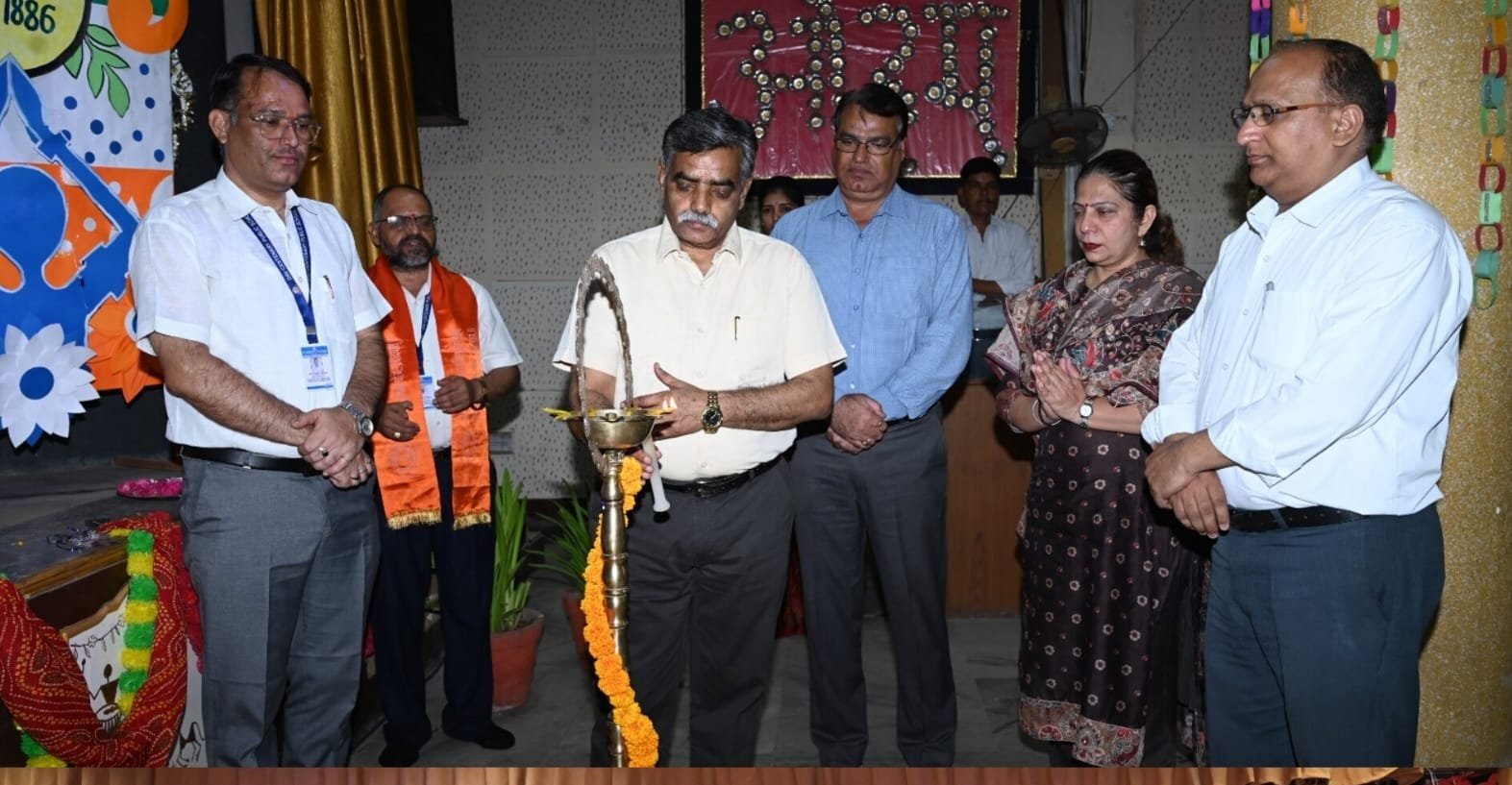
Contents
Colours of Joy, Confidence, and Creativity: VIBGYOR Summer Camp Ends on a High at DAV Centenary Public School, Jaipur
DAV Centenary Public School, Vaishali Nagar, Jaipur concluded its much-awaited 10-day summer camp ‘VIBGYOR’ with a grand Closing Ceremony on 31 May 2025. Running from 20 May to 31 May, the camp became a dynamic platform for students from DAV and nearby schools to dive into creativity, learn new skills, and experience fun-filled, meaningful activities in a safe and cheerful environment. The core motto “Learn and Share” guided each day’s schedule, promoting not just learning but also collaboration, self-expression, and overall development.
Students Shine in Cultural Show with Art, Music, Dance and Taekwondo
The Closing Ceremony began on a spiritual note with the traditional lighting of the lamp, marking the celebration of knowledge and positivity. A high-energy cultural programme followed, where students showcased their talents through colourful dance performances, melodious songs, and a well-coordinated taekwondo demonstration that reflected both discipline and confidence. Parents watched with pride as their children took centre stage, making it a memorable and emotional experience for many.
Special Guest Applauds School’s Efforts in Value-Based Learning
The school had the honour of welcoming Ms. Amardeep Chopra, Vice-Principal of Tilak Public School, Jaipur, as the Chief Guest. A passionate educator and active contributor to social causes through NGOs like Sparsh and Helpage India, Ms. Chopra commended DAV’s efforts in blending modern education with cultural and spiritual values. Her presence inspired students and staff alike, underlining the importance of social responsibility in education.
Principal Emphasises Positive Parenting and Holistic Growth
In his heartfelt address, Principal Mr. A.K. Sharma extended gratitude to the staff, students, and parents, appreciating their collective efforts that made the camp a success. He spoke about DAV’s unique identity—where tradition meets modernity, and where education is rooted in the values of Arya Samaj and spiritual practices like Havan. Addressing parents, he emphasized the importance of “connecting before correcting,” and encouraged them to reinforce good behaviour by recognizing and appreciating children’s positive actions. All participating students received certificates to acknowledge their enthusiasm and dedication. The ceremony ended on a high note, with parents applauding the school’s commitment to nurturing well-rounded individuals.
Education
7 Inspiring Highlights of DAV Foundation Day Jaipur Celebration – Amazing Vedic Legacy Revealed!
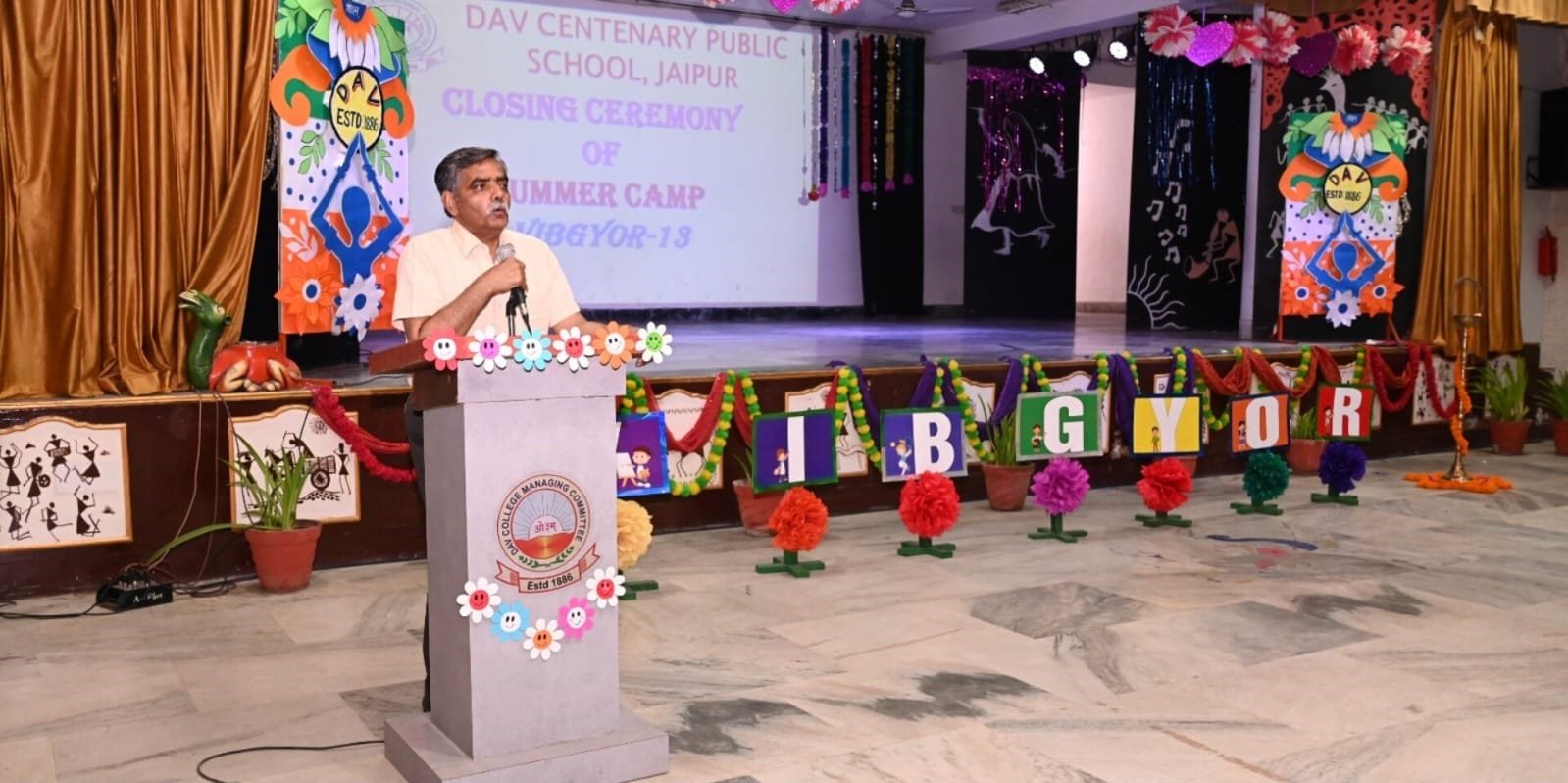
Contents
1. What is DAV Foundation Day?
DAV Foundation Day Jaipur marks the birth of the Dayanand Anglo-Vedic movement, initiated on June 1, 1886 in Lahore. It honors Swami Dayanand Saraswati’s vision of blending Vedic wisdom with modern scholarship and commemorates Mahatma Hansraj’s dedication as the first headmaster
2. DAV Foundation Day Jaipur – Opening Moments
DAV Foundation Day Jaipur began with reverence at DAV Centenary Public School, Vaishali Nagar, Jaipur. A soulful invocation reminded attendees of the school’s inception and aspirations. The reflection reaffirmed pride in the DAV mission of merging Vedic values with rigorous academics.
3. Tribute to Visionaries
A heartfelt tribute acknowledged Mahatma Hansraj’s selfless leadership and Swami Dayanand’s enduring impact. Their ideals continue guiding educators and students across India
4. Cultural Extravaganza: Music & Dance
The programme featured:
- A soul-stirring song symbolizing dedication,
- An energetic dance sequence embodying cultural pride.

Through artistic expression, students captured the spirit of DAV Foundation Day Jaipur, blending tradition with modern vibrancy.
5. Green Action: Tree Plantation Drive
In alignment with DAV’s value of environmental stewardship, students and staff led a tree plantation initiative. This initiative not only beautified the campus but fostered ecological awareness among young learners.
6. Leadership Speeches & Educational Vision
Principal Mr A. K. Sharma delivered a powerful address, praising the staff’s commitment and urging them to uphold Swami Dayanand Saraswati and Mahatma Hansraj’s values through dedicated teaching. His words illuminated the role of educators in perpetuating the DAV Foundation Day Jaipur legacy.
7. The Legacy of DAV in Jaipur & Beyond
Founded by Mahatma Hansraj in 1886, the DAV movement now spans over 900 schools and institutes across nations
Locally, DAV Centenary Public School in Vaishali Nagar upholds this heritage through disciplined academics, cultural integration, and initiatives like this year’s celebration.
The school’s reputation as one of the top educational institutions in the affluent Vaishali Nagar area reflects its excellence
DAV Foundation Day Jaipur shone with cultural celebration, green initiatives, and heartfelt tributes, reflecting a legacy of combining Vedic philosophy with modern education. As educators and students unite each year, they renew their commitment to nurturing well-rounded citizens equipped with values, environmental awareness, and cultural identity.
Education
11 Powerful Reasons Why DAV International Yoga Day Jaipur Uplifted Spirits!

Contents
1. What is DAV International Yoga Day Jaipur?
DAV International Yoga Day Jaipur marks the 11th annual observance of International Yoga Day at DAV Centenary Public School in Vaishali Nagar, Jaipur. Held on June 21, 2025, this event is deeply rooted in the Common Yoga Protocol, launched by the Government of India to standardize yoga practices in schools and communities
2. Morning Warm‑Up & Common Yoga Protocol
The celebration kicked off with energizing warm-up exercises. Led by trained staff and NCC cadets, the participants prepared their bodies for the sequence of standing and sitting asanas, pranayama, and meditation. Organized according to the Common Yoga Protocol, the session balanced movement, breath control, and inner stillness .
3. Dive Into Asanas, Pranayama & Meditation
Throughout the program, students and teachers performed:
- Standing postures like Tadasana (Mountain Pose) and Vrksasana (Tree Pose) to build strength and posture awareness.
- Sitting asanas including Sukhasana (Easy Pose) and Vajrasana (Thunderbolt Pose) to encourage grounding.
- Pranayama exercises, such as Anulom Vilom and Kapalbhati, guided by certified instructor insights into breath-body connection.
- Short meditation for mental focus and inner peace.
4. Connecting Yoga with Bhagavad Gita Wisdom
Principal Mr. A.K. Sharma delivered an inspiring speech connecting yoga techniques with the timeless Bhagavad Gita philosophy. He underscored three key virtues: balance, discipline, and unity, urging students and staff to carry yoga’s wisdom into all areas of life—academic, personal, and professional.
5. Voices from School & Citywide Initiatives
- The Government of Rajasthan, led by Education Secretary Krishna Kunal, mandated participation from teachers in both public and private schools via the ‘Yoga Sangam Portal’
- Across Jaipur, yoga events were held at iconic locations—Hawa Mahal, Amer Fort, Jantar Mantar, SMS Stadium, and Jal Mahal—echoing a citywide wellness movement
- On this day, students at other DAV institutions, like DAV Centenary Public School Mandi, similarly embraced yoga, reinforcing the DAV network’s commitment to wellness
6. Student Ambassadors & Official Mandates
In a first-ever initiative, Jaipur’s Education Department declared that each school would select a Yoga Ambassador—a student leader trained to advocate daily yoga among peers and the local community. These ambitious students will bolster Jaipur’s fitness journey beyond a single day of celebration.
7. Benefits of Daily Yoga Practice
DAV International Yoga Day Jaipur highlighted life-enhancing benefits:
- Improved concentration – vital for academic success.
- Strengthened immunity – crucial for ongoing health.
- Mental clarity & stress relief – tools for emotional well‑being.
- Physical fitness & posture correction – important in formative years.
- Cultivation of discipline & self‑regulation – critical life skills.
8. Global Theme: “Yoga for One Earth, One Health”
Participants embraced the UN-backed theme, “Yoga for One Earth, One Health.” This message, echoed by Rajasthan’s Chief Minister and public figures like Mayor Somya Gurjar, linked personal wellness to environmental health—highlighting responsibility toward the planet
9. Why This Celebration Matters in Jaipur
- Local relevance: Vaishali Nagar is an educational hub in Jaipur; school-led programs here influence wider youth culture
- Policy alignment: Supports NEP 2020’s emphasis on Indian culture, yoga, and holistic education
- Community engagement: Fosters citywide unity as Jaipur staged yoga events at heritage monuments.
- Health promotion: Trains future youth ambassadors to champion wellness year-round.
DAV International Yoga Day Jaipur was more than mere observance—it was a powerful, wellness-boosting movement inspiring students, educators, and community leaders. Grounded in tradition and driven by modern purpose, the event showcased yoga as both art and action. With the student ambassador initiative and widespread city participation, Jaipur is poised to embed yoga into daily routines—promising a healthier, more harmonious future.
Art
Vedanta PG Womens College Ringus : A Celebration of Dreams, Dedication & Daughters
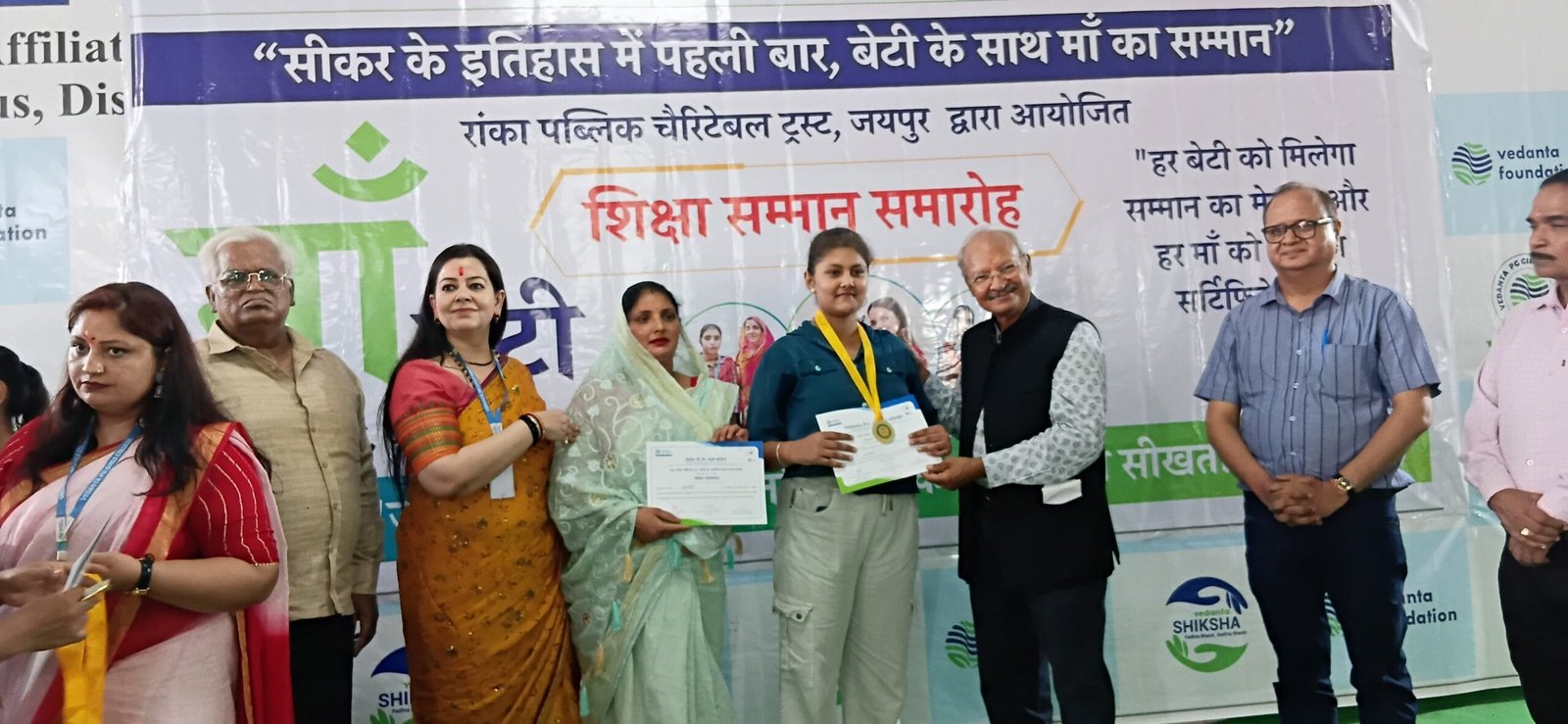
Contents
“Mother-Daughter Education Honour Ceremony” Lights Up Vedanta PG Women’s College, Ringas
Vedanta PG Women’s College, Ringas
Chief Guest: Hon’ble J.K. Ranka, Former Judge, Rajasthan High Court
Organised with Support from: Ranka Public Charitable Trust, Jaipur
A Moment to Remember
In a heartfelt and inspiring initiative, Vedanta PG Women’s College, Ringas hosted a unique event that celebrated not only the achievements of young women but also honoured the mothers who stood by them. The “Mother-Daughter Education Honour Ceremony” brought together families, educators, and community leaders to recognise the power of education and the deep bond between mothers and daughters.
A Warm Welcome by the Principal
Principal Prof. Dr. Shubha Sharma welcomed all guests, students, and their proud mothers with warmth and gratitude. She shared her vision for the college as a place where girls are empowered not only through education but through values and strength that come from their families.
“Educating girls is not just a goal for us—it is our identity. Behind every strong daughter is a mother who believed, who supported, who never gave up.”

Words of Encouragement from the Chief Guest
Chief Guest Hon’ble J.K. Ranka appreciated the initiative and praised the institution for recognising the contribution of mothers alongside their daughters’ achievements.
“Honouring daughters for their achievements, along with the mothers who shaped their journeys, is both noble and necessary. Girls’ education is vital, and this initiative by Vedanta College reflects true progress.”
He also emphasized that Ranka Public Charitable Trust is fully committed to advancing girls’ education and social empowerment.
A Celebration of Bonds Beyond Words
The most touching moment of the event was when mothers walked the stage beside their daughters to receive honours together. It wasn’t just recognition—it was emotion, memory, and pride shared on one platform.
Dr. Sharma added,
“A mother is the melody of her daughter’s breath. This relationship builds not just individuals, but families, communities, and nations.”
Recognising Achievers in Every Field
The ceremony celebrated young women who completed their schooling, teacher training, and those who excelled in academics, culture, and sports. What made the event truly special was that these recognitions were shared with the women who made those journeys possible—their mothers.
Gratitude to the Foundation’s Leadership
Dr. Sharma thanked the guiding forces behind Vedanta Foundation:
- Mrs. Suman Didwania, Trustee
- Mr. T. Ravikrishnan, CEO
Their ongoing support and vision helped transform this event into a symbol of community spirit and empowerment.


A Well-Orchestrated Celebration
The event was smoothly conducted by Dr. Sushila Garhwal, Dr. Jyoti Rajawat, and Ms. Shilpi Mamodiya. Their confident and graceful anchoring ensured the flow of the event remained inspiring and connected with every guest in the hall.
More Than Just a Ceremony
This celebration went beyond felicitation. It sent out a larger message to society—that when we support and uplift girls and acknowledge the sacrifices of mothers, we lay the foundation for a better, more inclusive future. It reinforced the idea that education, when coupled with emotional strength and family values, becomes a tool of real transformation.
Education
Kota ICICI Bank Staffer Swindles ₹4.5 Crore, Gambles It All on Stock Market

Contents

Sakshi Gupta, a relationship manager at ICICI Bank’s Kota branch from 2020 to 2023, was arrested for cheating customers of ₹4.5 crore. She changed their contact details to stop alerts and transferred money to a pool account, which she used for stock market trading. The fraud came to light after the branch manager filed a complaint.
In a shocking case of financial fraud, Sakshi Gupta, a relationship manager at ICICI Bank’s Kota branch, has been accused of embezzling ₹4.5 crore from customer accounts. Gupta allegedly manipulated customer contact details to prevent them from receiving transaction alerts, allowing her to siphon off funds undetected. The stolen money was reportedly funneled into a pool account and subsequently used for high-risk stock market trading. The fraudulent activity went unnoticed for months, raising serious concerns about internal security and oversight mechanisms within the bank.
The accused named Sakshi Gupta was posted as a relationship manager at ICICI Banks’s DCM branch, according to a PTI news agency.
Sakshi Gupta, a relationship manager at ICICI Bank’s Kota branch from 2020 to 2023, was arrested for a massive fraud involving ₹4.58 crore. According to police, she stole money from over 110 accounts belonging to 41 customers over a span of two years. Gupta allegedly changed customer contact details to block transaction alerts and transferred the funds into a pool account. She then invested the stolen amount in the stock market, where she lost most of it. The fraud came to light after branch manager Tarun Dadich filed a complaint at Udhyog Nagar Police Station on February 18.
Sakshi Gupta, a relationship manager at ICICI Bank’s Kota branch from 2020 to 2023, was arrested for cheating customers out of ₹4.58 crore. Police said she stole money from over 110 accounts belonging to 41 customers over two years. To avoid detection, she changed the registered mobile numbers of account holders to numbers belonging to her relatives. This prevented customers from getting transaction alerts or OTPs.
Gupta then quietly transferred funds to multiple accounts. In one case, she used the account of an elderly woman—who was completely unaware—as a “pool account” to collect money. By February 15, 2023, she had moved over ₹3 crore into this single account. Most of the stolen money was then invested in the stock market, where she lost a large part of it. The fraud was exposed when branch manager Tarun Dadich filed a complaint at Udhyog Nagar Police Station on February 18.
Sub-Inspector Ibrahim confirmed the details of the case.
Sakshi Gupta, a relationship manager at ICICI Bank’s Kota branch from 2020 to 2023, has been arrested for embezzling ₹4.58 crore from customers’ accounts. According to police, she stole money from over 110 accounts of 41 customers over two years. To avoid detection, she changed the mobile numbers linked to the accounts with those of her relatives, stopping transaction alerts and OTPs from reaching the actual account holders.
Sub-Inspector Ibrahim revealed that Gupta misused debit cards, PINs, and OTPs, and even activated overdraft facilities on 40 accounts without the customers’ knowledge. She also closed 31 customers’ fixed deposits, illegally transferring over ₹1.34 crore, and took a personal loan of ₹3.40 lakh using fraudulent means.
Many of these transactions were carried out using Insta Kiosks, ATMs, and digital banking platforms. She used debit cards from at least 4 customers and routed money into demat accounts to hide her activities. One elderly woman’s account, unknown to her, was used as a pool account to collect over ₹3 crore.
The fraud came to light after branch manager Tarun Dadich filed a complaint at Udhyog Nagar Police Station on February 18, 2023.
Meanwhile, ICICI Bank released a statement saying, “The interest of our customers is most important. We filed an FIR immediately after discovering the issue and have a zero-tolerance policy for any fraudulent activity.” The bank added that Gupta has been suspended and genuine customer claims have already been settled.
Sakshi Gupta, an ICICI Bank relationship manager in Kota, has been arrested for allegedly siphoning off Rs 4.58 crore from customer accounts between 2020 and 2023. She fraudulently withdrew funds from over 100 accounts, investing in the stock market and suffering losses. The bank has filed an FIR, suspended the employee, and settled genuine claims from impacted customers.
KOTA: In a major bank fraud case, Sakshi Gupta, a relationship manager at ICICI Bank’s Shriram Nagar branch in Kota, has been accused of siphoning off ₹4.58 crore from customer accounts between 2020 and 2023. She was arrested by Udhyog Nagar police on May 31 after an investigation into the fraud, which first came to light on February 18 when branch manager Tarun Dadhich filed a complaint.
According to the police, Sakshi fraudulently withdrew money from over 100 accounts belonging to 41 customers over two and a half years. To hide her activities, she changed the mobile numbers linked to many accounts to those of her relatives, preventing customers from receiving transaction alerts and OTPs.
Sub-Inspector Ibrahim stated that Sakshi systematically transferred large sums into various accounts, including over ₹3 crore into an elderly woman’s account that she used as a “pool account” without the woman’s knowledge. She also misused debit cards, PINs, and OTPs, and even activated overdraft facilities on 40 customer accounts without consent. Additionally, she closed fixed deposits and took a personal loan using fraudulent methods.
Most of the siphoned money was invested in the stock market, where she incurred heavy losses. The fraud was carried out using digital banking platforms, ATMs, Insta Kiosks, and demat accounts.
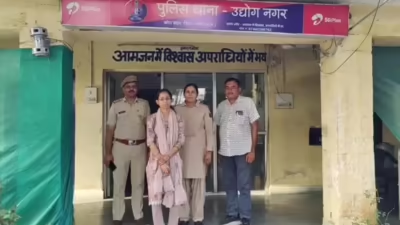
Education
DAV Centenary Public School CBSE Results 2025 – Top Performers Shine Bright

Contents
DAV Centenary Public School CBSE Results 2025 have once again set a benchmark for academic excellence in Jaipur. Located in the vibrant neighborhood of Vaishali Nagar, the school has demonstrated its unwavering commitment to quality education through its students’ remarkable performances in the CBSE Class X and XII examinations for the academic year 2024-25. The results, declared on May 13, 2025, reflect the dedication of both students and faculty in striving for academic success.
Class XII Results Overview
In the CBSE Class XII examinations, DAV Centenary Public School showcased commendable results:
- Total Students Appeared: 165
- Students Passed: 139
- Pass Percentage: 82.33%
- Students Scoring Above 90%: 10
Stream-wise Toppers:
- Science (Medical): Vinayak Chaturvedi – 94.60%
- Science (Non-Medical): Rinku Yadav – 94.00%
- Commerce: Harsh Kumar Vatsa – 95.00%
These achievements highlight the school’s balanced emphasis on both science and commerce streams, fostering an environment where students can excel across disciplines.
Class X Results Overview
The Class X results further underscore the school’s academic prowess:
- Total Students Appeared: 199
- Students Passed: 195
- Pass Percentage: 97.99%
- Students Scoring Above 90%: 11
Top Scorers:
- Krish Kumawat – 96.60%
- Saket Sharma – 95.60%
- Shreyansee Gupta – 95.40%
- Abhi Chaudhary – 95.20%
- Sai Chandan Senapati – 94.80%
The near-perfect pass percentage and the number of high scorers reflect the school’s effective teaching methodologies and the students’ dedication.
Principal’s Remarks
Mr. A.K. Sharma, the esteemed Principal of DAV Centenary Public School, expressed immense pride in the students’ accomplishments. He stated, “These results are a testament to the relentless efforts of our students and the unwavering support of our dedicated faculty. Our commitment to fostering academic excellence remains steadfast.”
He further encouraged students to continue their pursuit of knowledge and personal growth, emphasizing the importance of holistic development in today’s competitive world.
Comparative Analysis with National Averages
To contextualize the school’s performance, it’s insightful to compare it with national averages:
- CBSE Class XII National Pass Percentage (2025): 88.39%
- CBSE Class X National Pass Percentage (2025): 93.66%
While the school’s Class XII pass percentage stands at 82.33%, slightly below the national average, the Class X pass percentage of 97.99% surpasses the national figure. This indicates a strong foundation at the secondary level, which the school aims to build upon for higher secondary education.
About DAV Centenary Public School
Established with a vision to provide quality education, DAV Centenary Public School in Vaishali Nagar, Jaipur, has consistently upheld its reputation for academic excellence. The school offers a holistic learning environment, integrating modern teaching methodologies with traditional values.
Key Features:
- Curriculum: Affiliated with the Central Board of Secondary Education (CBSE), the school follows a comprehensive curriculum that emphasizes both academic and co-curricular development.
- Facilities: State-of-the-art infrastructure, including well-equipped laboratories, libraries, and sports facilities.
- Faculty: A team of experienced and dedicated educators committed to nurturing students’ potential.
For more information, visit the official school website.
Conclusion
The DAV Centenary Public School CBSE Results 2025 are a reflection of the institution’s unwavering commitment to academic excellence. The impressive performances in both Class X and XII examinations underscore the collaborative efforts of students, faculty, and parents. As the school continues to foster an environment conducive to holistic development, it stands as a beacon of quality education in Jaipur.
External Resources: CBSE Official Website
Education
Blue Day Celebration 2025 at DAV Centenary Public School Jaipur: 7 Joyful Highlights

Contents
Blue Day Celebration 2025 at DAV Centenary Public School Jaipur was a vibrant event that brought joy and learning to young students. Held on May 15, 2025, the celebration aimed to introduce children from Nursery to Grade II to the color blue through various engaging activities.
The Significance of Blue Day
Blue is often associated with tranquility, calmness, and depth. By dedicating a day to this color, the school aimed to enhance children’s understanding and appreciation of colors, which is a fundamental aspect of early childhood education.
Event Overview
The school premises were adorned with blue decorations, creating an immersive environment for the students. Children arrived dressed in various shades of blue, contributing to the day’s theme and fostering a sense of unity and excitement.
Activities and Highlights
Show and Tell
Students participated in a “Show and Tell” session, bringing blue-colored objects from home and sharing stories or facts about them. This activity enhanced their public speaking skills and confidence.
Vegetable Printing
Children engaged in vegetable printing using blue paint, creating artistic impressions and learning about textures and shapes. This hands-on activity stimulated their creativity and fine motor skills.
Storytelling Sessions
Teachers narrated stories centered around blue-themed characters and settings, capturing the children’s imagination and improving their listening skills.
Crafting Aquatic Animals
Students crafted aquatic animals like fish and whales using blue paper and materials, combining art with environmental education.
Dance Performance
The day concluded with a dance performance to the “Blue Whale Song,” allowing children to express themselves through movement and rhythm.
Educational Impact
The Blue Day Celebration 2025 served as more than just a fun event; it was an educational experience that contributed to the holistic development of the students. Activities were designed to enhance cognitive abilities, sensory skills, and environmental awareness.

Principal’s Remarks
Mr. A.K. Sharma, the esteemed Principal of DAV Centenary Public School Jaipur, commended the efforts of the teachers and students. He emphasized the importance of such events in fostering creativity, boosting confidence, and enhancing communication skills among young learners.
The Blue Day Celebration 2025 at DAV Centenary Public School Jaipur was a resounding success, leaving lasting impressions on the young minds. Through a blend of fun and education, the event highlighted the school’s commitment to nurturing well-rounded individuals.
External Resources:

 Education2 months ago
Education2 months agoTop CBSE Results 2024-25: VSIS Students Achieve Outstanding Success

 Education2 months ago
Education2 months agoDAV Centenary Public School CBSE Results 2025 – Top Performers Shine Bright

 Education4 weeks ago
Education4 weeks agoKota ICICI Bank Staffer Swindles ₹4.5 Crore, Gambles It All on Stock Market

 Bollywood4 weeks ago
Bollywood4 weeks agoHousefull 5 Movie Review: Akshay Kumar, Riteish Deshmukh Bring Laughter and Twists in Bollywood’s Biggest Comedy Franchise

 Education2 months ago
Education2 months agoBlue Day Celebration 2025 at DAV Centenary Public School Jaipur: 7 Joyful Highlights

 Cricket4 weeks ago
Cricket4 weeks agoBengaluru Chinnaswamy Stadium Stampede: 11 Dead, 33 Injured in RCB Victory Parade Chaos

 Education1 week ago
Education1 week ago11 Powerful Reasons Why DAV International Yoga Day Jaipur Uplifted Spirits!

 Education1 week ago
Education1 week ago7 Inspiring Highlights of DAV Foundation Day Jaipur Celebration – Amazing Vedic Legacy Revealed!






































